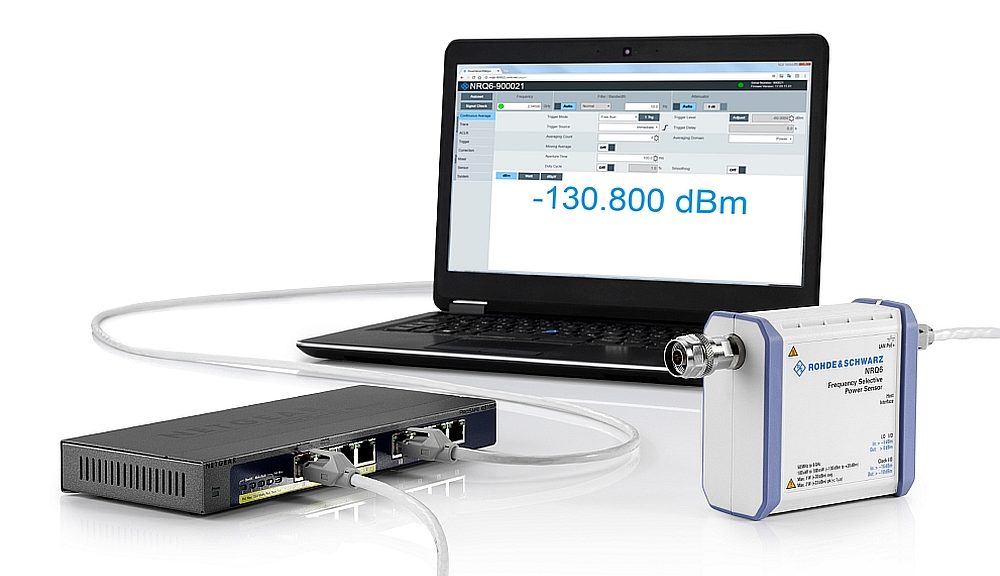- The R&S NRQ6 frequency selective power sensor is capable of power measurements up to -130 dBm.
- According to Rohde & Schwarz, it combines the measurement accuracy of a wattmeter with the dynamics of a spectrum analyzer.
- This solution makes it possible to calibrate the output power of a transmitter with a single instrument.
The R&S NRQ6 power sensor operates in the frequency range 50 MHz to 6 GHz. It performs band-limited continuous average power measurements – i.e. on a selected transmission channel – up to a signal bandwidth of 100 MHz.
Band-limited power measurements, which contribute to reducing the noise component measured in the signal, make it possible to measure power up to -130 dBm without affecting, according to Rohde & Schwarz, speed or accuracy. In comparison, conventional diode power sensors are limited to about -70 dBm due to the higher measured noise component.
The power sensor is controlled via a LAN web interface. It is possible to measure continuous average power measurements, display traces to analyze pulsed signals, and perform common ACLR measurements in mobile communications applications. Predefined filters, including 3GPP specifications such as LTE, are provided. Various auto-set functions are available for the measurement frequency and signal bandwidth.
The NRQ6 R&S solution, based on an I/Q receiver, can be used as an RF front end to capture I/Q signals. With the optional R&S NRQ6-K1 I/Q data interface, the measured I/Q signals can be downloaded via a local network to a computer for analysis. The Rohde & Schwarz R&S VSE (Vector Signal Explorer) software offers measurement functions for vector signal analysis, such as EVM and ACLR.
The R&S NRQ6 frequency selective power sensor is a compact solution for calibrating transmitters with a single instrument. Test setups involving a splitter and a spectrum analyzer are not required to measure and calibrate the frequency response of a transmitter. With a linearity of 0.02 dB over the entire dynamic range, it can also be used as a power calibrator.






